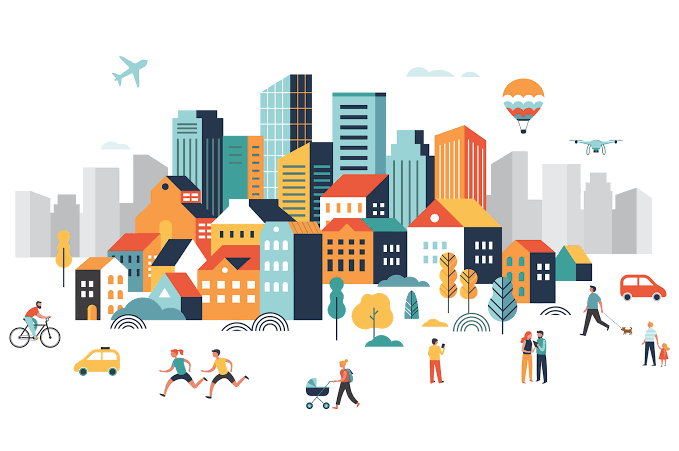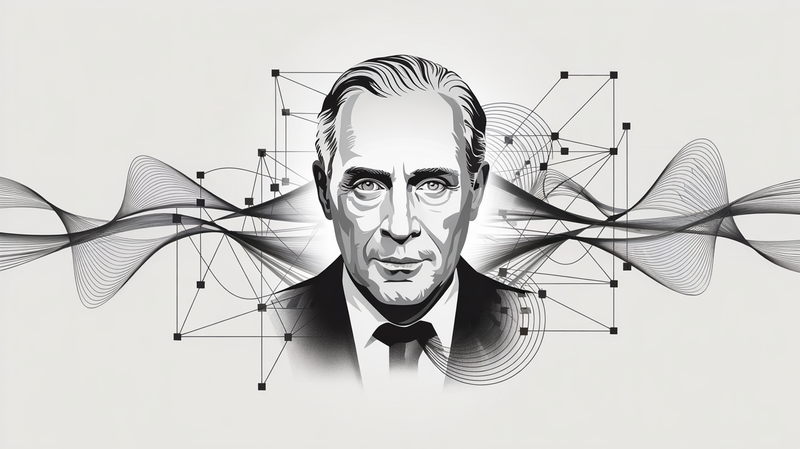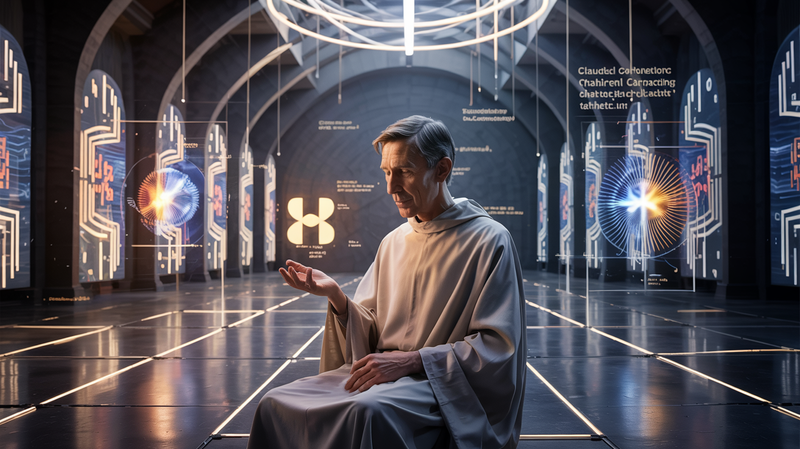The Imperative Role of Facial Recognition in Future 15-Minute Cities
In envisioning the cities of the future, one concept that has gained significant traction is the notion of the '15-minute city'. This model, which aims to enhance sustainability and livability, seeks to restructure urban environments in a way that allows residents to reach their work, shopping, recreational, and

In envisioning the cities of the future, one concept that has gained significant traction is the notion of the '15-minute city'. This model, which aims to enhance sustainability and livability, seeks to restructure urban environments in a way that allows residents to reach their work, shopping, recreational, and cultural destinations within a 15-minute radius of their homes. Here, we explore the potential necessity of facial recognition technology in the context of these 15-minute cities.
1. Security and Public Safety:In a densely populated urban space, the need for advanced security measures is paramount. Facial recognition technology can play a critical role in monitoring public areas, tracking suspicious activities, and preventing potential crimes. It can also help in identifying lost or missing individuals and contribute to overall public safety.
2. Efficient Commuting:Facial recognition can help streamline public transportation. By utilizing this technology, authorities can eliminate the need for traditional methods of ticketing or payment, accelerating the transit process and improving commuting efficiency. Fast and reliable public transport is a key element of the 15-minute city concept.
3. Smart Services:Facial recognition technology can be used to offer personalized public services. From intelligent advertising screens that adjust their content based on the viewer to automated vending machines or library services, facial recognition can enhance the user experience in various aspects of daily life.
4. Resource Optimization:In a 15-minute city, optimizing resource distribution is critical to ensure sustainability. Facial recognition can help gather valuable data regarding the population's patterns, preferences, and behavior. These insights can assist city planners in making informed decisions regarding resource allocation, infrastructure development, and service provision.
5. Social Credit Systems:While controversial, some countries like China have been experimenting with social credit systems, which reward or penalize citizens based on their behaviors. Facial recognition plays an essential role in such systems, enabling authorities to monitor public behavior and apply the social credit scoring system.
While the application of facial recognition in 15-minute cities seems promising, it’s crucial to maintain a delicate balance between leveraging technology for societal benefits and safeguarding individual privacy rights. The goal should be to create inclusive, sustainable, and intelligent cities while respecting citizens' privacy and freedoms.
Embracing the Future: Facial Recognition and Beyond in 15-Minute Cities
The first part of our exploration highlighted the potential necessity of facial recognition technology within 15-minute cities. However, this is just the beginning. As we peer deeper into the realm of technological integration in these cities, we can visualize a future teeming with possibilities. Let's explore how advancements in artificial intelligence, machine learning, and data analytics, complementing facial recognition, can contribute to the evolution of 15-minute cities.
1. Internet of Things (IoT) and Smart Infrastructure:Smart devices and IoT technology can take facial recognition to another level by integrating it with city infrastructure. This could include streetlights that adjust their brightness based on the number of people on the street, parking lots that notify drivers of available spaces, or waste bins that inform city services when they need to be emptied. All these, coupled with facial recognition, can enhance citizens' quality of life and city functionality.
2. Predictive Policing:Combining facial recognition with machine learning algorithms can enable predictive policing. This involves analyzing collected data to anticipate, prevent, and respond more effectively to potential criminal activity. Such systems can identify crime hotspots, predict potential threats, and enable swift response, thus ensuring the safety and security of citizens in these 15-minute cities.
3. Personalized Public Health:Amid the global trend of aging populations, facial recognition can support tailored health services. By recognizing an individual, AI can provide health advice or reminders to take medication. It could even detect early signs of fatigue or stress and suggest preventative measures, thereby promoting public health and well-being.
4. Dynamic Urban Planning:Real-time data collected via facial recognition can significantly influence urban planning. By understanding the behavioral patterns, peak activity times, and preferred routes of citizens, city planners can dynamically adjust and optimize city elements such as traffic flow, public transportation schedules, and infrastructure development.
5. Eco-conscious Cities:With facial recognition technology and AI, it's possible to monitor and manage environmental factors better. For example, sensors could track air quality or detect areas of high energy consumption, leading to targeted improvements and promoting sustainability within the 15-minute city model.
Facial recognition and other advanced technologies indeed hold tremendous potential in shaping our future cities. However, as we move forward, it's crucial to address the ethical implications and privacy concerns associated with their usage. Technological progress and data privacy must not be mutually exclusive. Instead, they should work in tandem to ensure a secure, efficient, and sustainable urban life.
Envisioning the Future: The Potential Risks and Mitigations of Facial Recognition in 15-Minute Cities
Having discussed the exciting prospects of facial recognition in 15-minute cities, we must also address potential challenges. As we enter this new era of hyper-connectivity and data-driven decision-making, understanding the risks associated with facial recognition and other technologies is essential to ensure a balanced, inclusive, and ethical future urban model.
1. Privacy Concerns:One of the main challenges with facial recognition technology is the risk of invasion of privacy. Governments and corporations must prioritize implementing robust privacy protection measures. They should ensure that personal data collection is kept to a minimum, properly secured, and used only for the purpose it is collected.
2. Potential for Misuse:There's a risk that these technologies could be misused by either governments or malicious actors, leading to unwanted surveillance, identity theft, or other forms of cybercrime. Legislation must stay abreast of technology and include clear guidelines and stringent penalties for misuse.
3. Inaccuracy and Bias:Facial recognition algorithms have often been criticized for their inaccuracies and biases, particularly in identifying people of certain demographics. Continuous improvements in these algorithms, and legislation holding developers accountable for such biases, can help overcome this challenge.
4. Digital Divide:As we rely more on sophisticated technologies, there's a risk of widening the digital divide. Not everyone may have access to or understand these technologies, leading to potential exclusion. Governments and city planners must ensure technology benefits all citizens, regardless of their tech-savviness or socio-economic status.
Mitigation Measures:
In response to these challenges, several steps could be taken to minimize risks:
1. Regulation and Oversight:Clear, robust regulation of facial recognition technology is a must. This would establish standards for accuracy, data storage, and usage, as well as penalize misuse.
2. Transparency and Consent:Users should be fully informed about how their data is used and should have the ability to opt-out. Consent must be a fundamental part of data collection and usage.
3. Public-Private Partnerships:By collaborating with private technology companies, governments can leverage their expertise to improve accuracy and reduce biases in facial recognition technology.
4. Public Engagement and Education:It's vital to engage the public in conversations about technology and privacy. Education can also help citizens understand and navigate the digital landscape.
While facial recognition can offer numerous benefits to the 15-minute city concept, its successful implementation hinges on striking a delicate balance between technological advancement and ethical considerations. As we prepare for this urban transformation, prioritizing privacy, inclusion, and regulation can guide us toward sustainable, secure, and thriving 15-minute cities.




